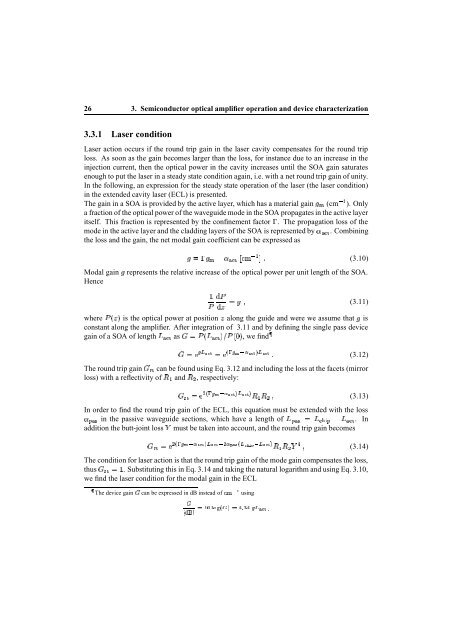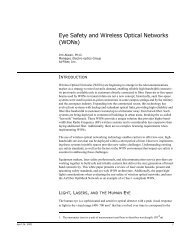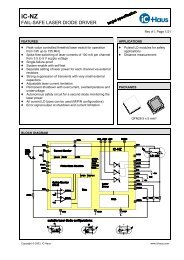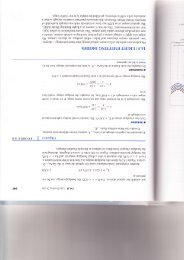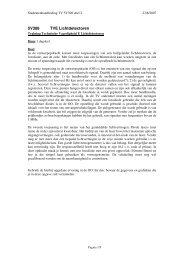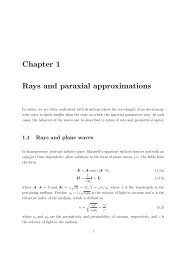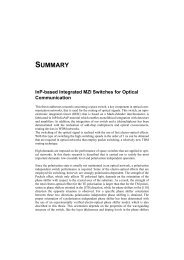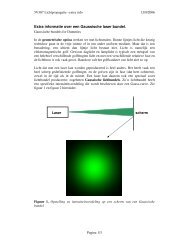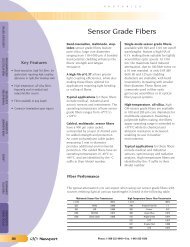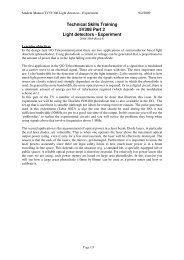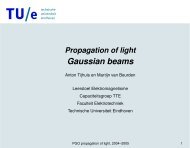A Wavelength Converter Integrated with a Discretely Tunable Laser ...
A Wavelength Converter Integrated with a Discretely Tunable Laser ...
A Wavelength Converter Integrated with a Discretely Tunable Laser ...
You also want an ePaper? Increase the reach of your titles
YUMPU automatically turns print PDFs into web optimized ePapers that Google loves.
26 3. Semiconductor optical amplifier operation and device characterization<br />
3.3.1 <strong>Laser</strong> condition<br />
<strong>Laser</strong> action occurs if the round trip gain in the laser cavity compensates for the round trip<br />
loss. As soon as the gain becomes larger than the loss, for instance due to an increase in the<br />
injection current, then the optical power in the cavity increases until the SOA gain saturates<br />
enough to put the laser in a steady state condition again, i.e. <strong>with</strong> a net round trip gain of unity.<br />
In the following, an expression for the steady state operation of the laser (the laser condition)<br />
in the extended cavity laser (ECL) is presented.<br />
The gain in a SOA is provided by the active layer, which has a material gain (cm ). Only<br />
a fraction of the optical power of the waveguide mode in the SOA propagates in the active layer<br />
itself. This fraction is represented by the confinement factor . The propagation loss of the<br />
mode in the active layer and the cladding layers of the SOA is represented by ¡ . Combining<br />
the loss and the gain, the net modal gain coefficient can be expressed as<br />
Modal gain represents the relative increase of the optical power per unit length of the SOA.<br />
Hence<br />
¡ <br />
<br />
¤<br />
<br />
<br />
(3.10)<br />
<br />
where <br />
is the optical power at position along the guide and were we assume that is<br />
constant along the amplifier. After integration of 3.11 and by defining the single pass device<br />
gain of a SOA of length as <br />
<br />
<br />
(3.11)<br />
, we find<br />
<br />
<br />
(3.12)<br />
<br />
The round trip gain can be found using Eq. 3.12 and including the loss at the facets (mirror<br />
loss) <strong>with</strong> a reflectivity of and <br />
¦ , respectively:<br />
¦ <br />
<br />
<br />
¦ (3.13)<br />
<br />
In order to find the round trip gain of the ECL, this equation must be extended <strong>with</strong> the loss<br />
in the passive waveguide sections, which have a length of . In<br />
¡<br />
addition the butt-joint loss must be taken into account, and the round trip gain becomes<br />
¦ <br />
<br />
¦ <br />
<br />
<br />
¦ (3.14)<br />
<br />
The condition for laser action is that the round trip gain of the mode gain compensates the loss,<br />
¤ thus . Substituting this in Eq. 3.14 and taking the natural logarithm and using Eq. 3.10,<br />
we find the laser condition for the modal gain in the ECL<br />
The device gain can be expressed in dB instead of ¡ ¢ using<br />
£¤¦¥¨§©¡©


